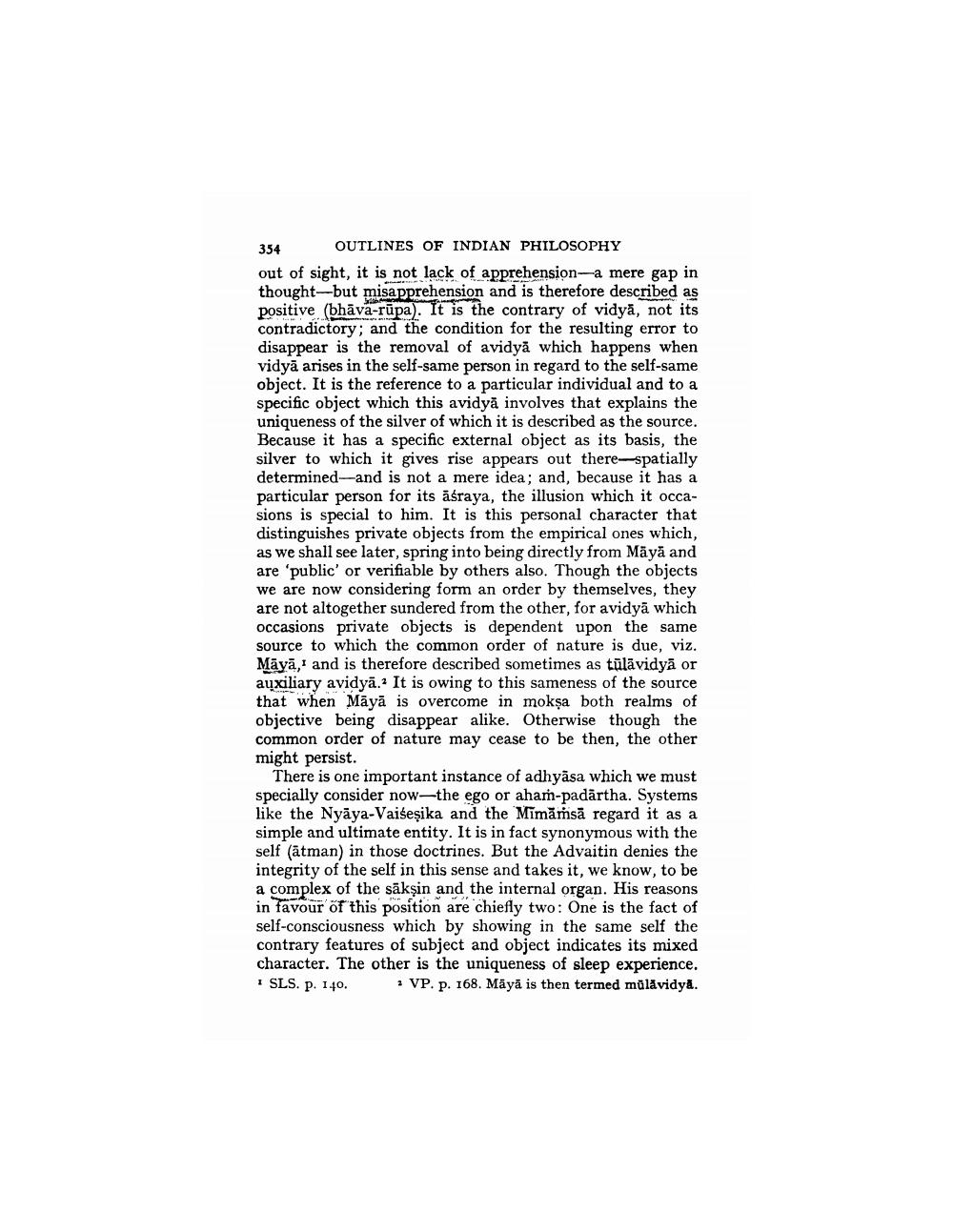________________
354
OUTLINES OF INDIAN PHILOSOPHY
out of sight, it is not lack of apprehension-a mere gap in thought-but misapprehension and is therefore described as positive (bhava-rupa). It is the contrary of vidya, not its contradictory; and the condition for the resulting error to disappear is the removal of avidya which happens when vidya arises in the self-same person in regard to the self-same object. It is the reference to a particular individual and to a specific object which this avidya involves that explains the uniqueness of the silver of which it is described as the source. Because it has a specific external object as its basis, the silver to which it gives rise appears out there-spatially determined and is not a mere idea; and, because it has a particular person for its aśraya, the illusion which it occasions is special to him. It is this personal character that distinguishes private objects from the empirical ones which, as we shall see later, spring into being directly from Māyā and are 'public' or verifiable by others also. Though the objects we are now considering form an order by themselves, they are not altogether sundered from the other, for avidya which occasions private objects is dependent upon the same source to which the common order of nature is due, viz. Māyā, and is therefore described sometimes as tūlāvidyā or auxiliary avidya. It is owing to this sameness of the source that when Māyā is overcome in mokṣa both realms of objective being disappear alike. Otherwise though the common order of nature may cease to be then, the other might persist.
There is one important instance of adhyasa which we must specially consider now-the ego or aham-padartha. Systems like the Nyaya-Vaiseṣika and the Mimämsä regard it as a simple and ultimate entity. It is in fact synonymous with the self (atman) in those doctrines. But the Advaitin denies the integrity of the self in this sense and takes it, we know, to be a complex of the sākṣin and the internal organ. His reasons in favour of this position are chiefly two: One is the fact of self-consciousness which by showing in the same self the contrary features of subject and object indicates its mixed character. The other is the uniqueness of sleep experience. VP. p. 168. Mäyä is then termed mülǎvidya.
I SLS. p. 140.




